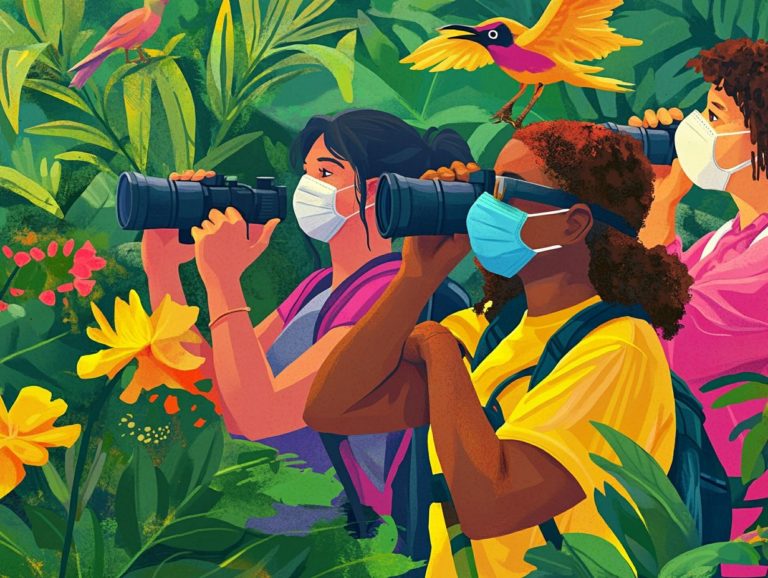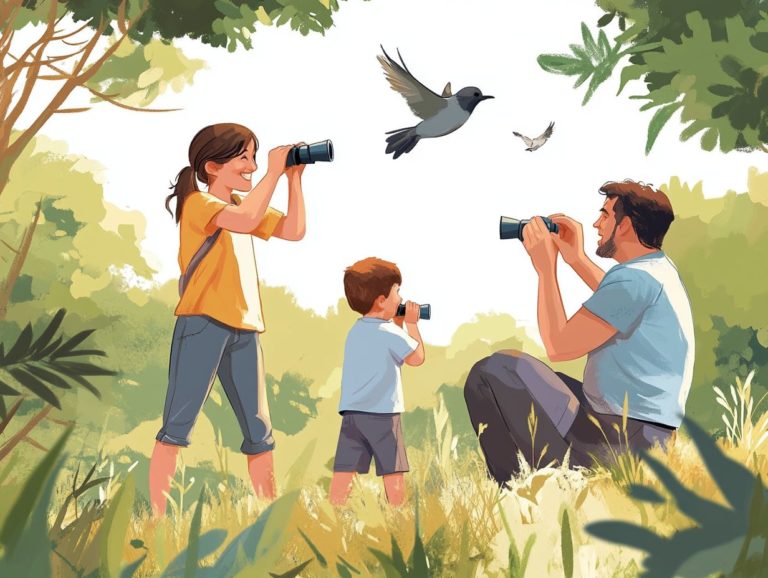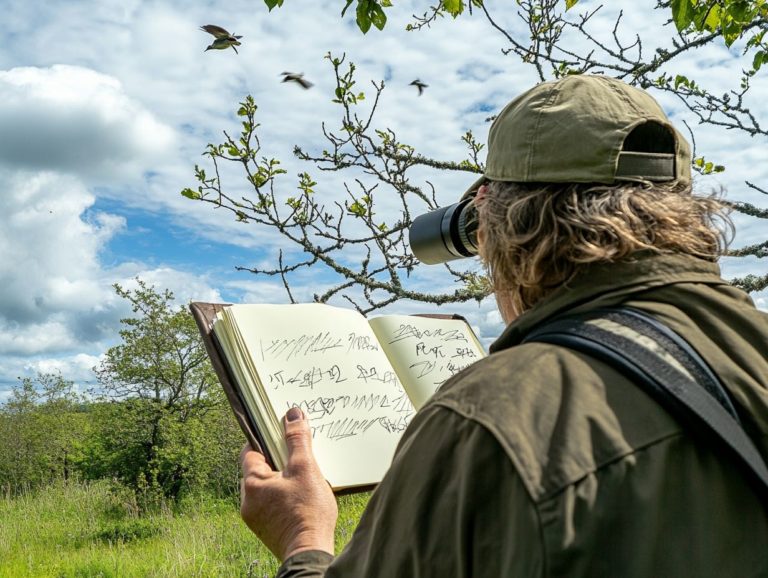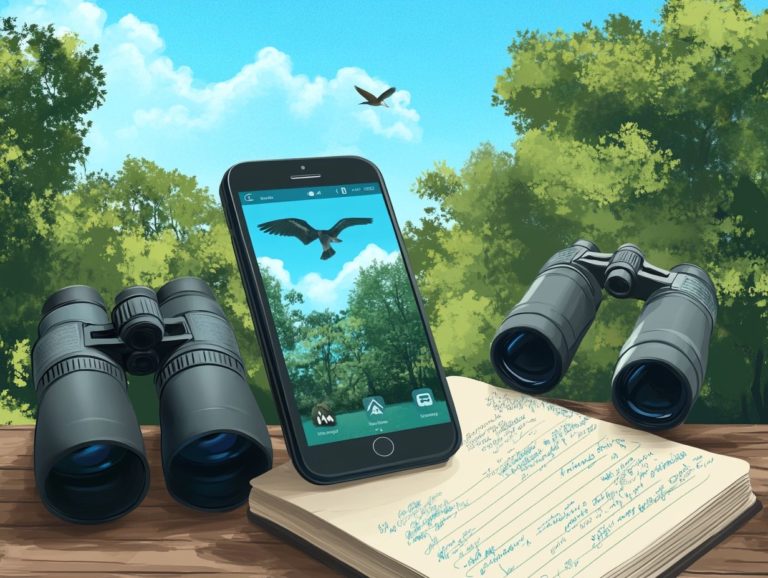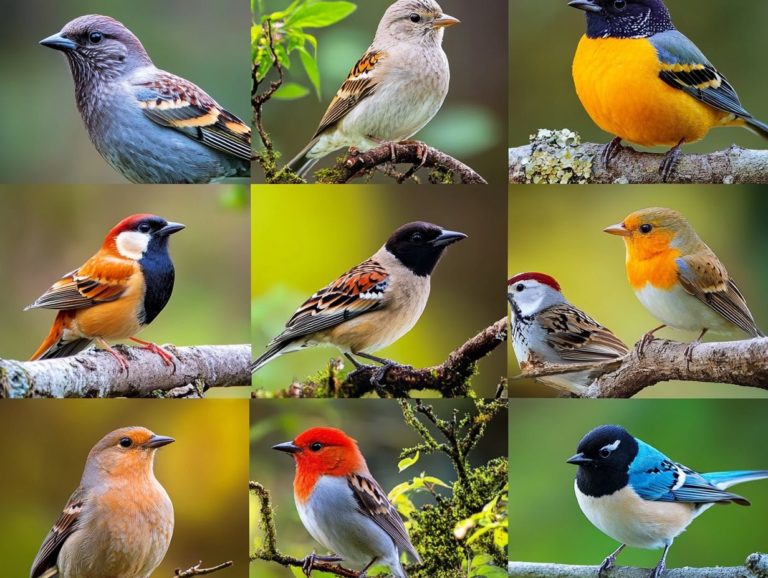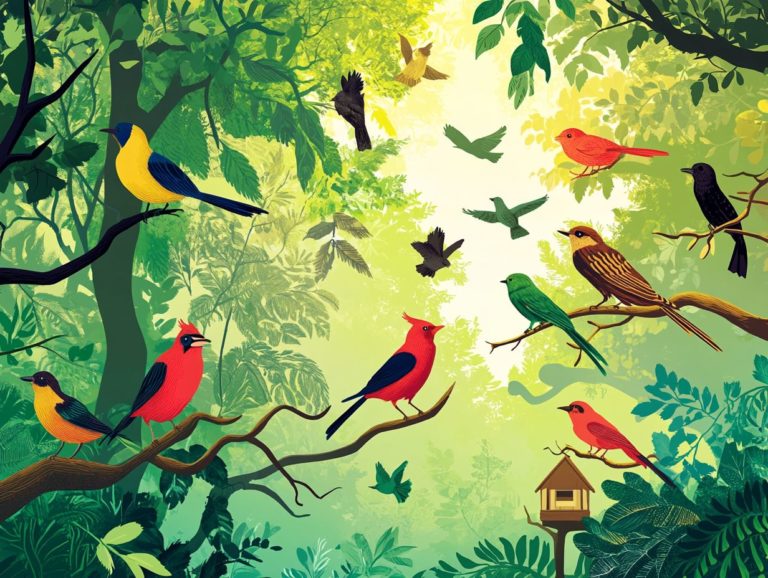What is the Role of Citizen Science in Birding?
Join us in making a difference! Citizen science is revolutionizing your understanding and protection of our feathered friends, particularly through initiatives like the Great Backyard Bird Count and the eBird project.
By involving the public in data collection and observation, this collaborative approach enhances your knowledge of bird populations and migration patterns. It also deepens your connection to the natural world.
This article delves into the essence of citizen science, highlighting its benefits for bird enthusiasts, including bird counting initiatives. It offers guidance on how you can get involved and examines its significant impact on bird conservation efforts.
It will also discuss the challenges faced in this arena and provide strategies for overcoming them. Join in to uncover the crucial role citizen science plays in safeguarding our avian companions, especially in the context of urban birds.
Contents
- Key Takeaways:
- Understanding Citizen Science
- The Relationship Between Citizen Science and Birding
- How to Participate in Citizen Science for Birding
- The Impact of Citizen Science on Bird Conservation
- Challenges and Limitations of Citizen Science in Birding
- Frequently Asked Questions
- What is the Role of Citizen Science in Birding?
- How does Citizen Science benefit the field of Birding?
- Can anyone participate in Citizen Science for Birding?
- What are some examples of Citizen Science projects for Birding?
- How can I get involved in Citizen Science for Birding?
- Can Citizen Science help with conservation efforts for birds?
Key Takeaways:
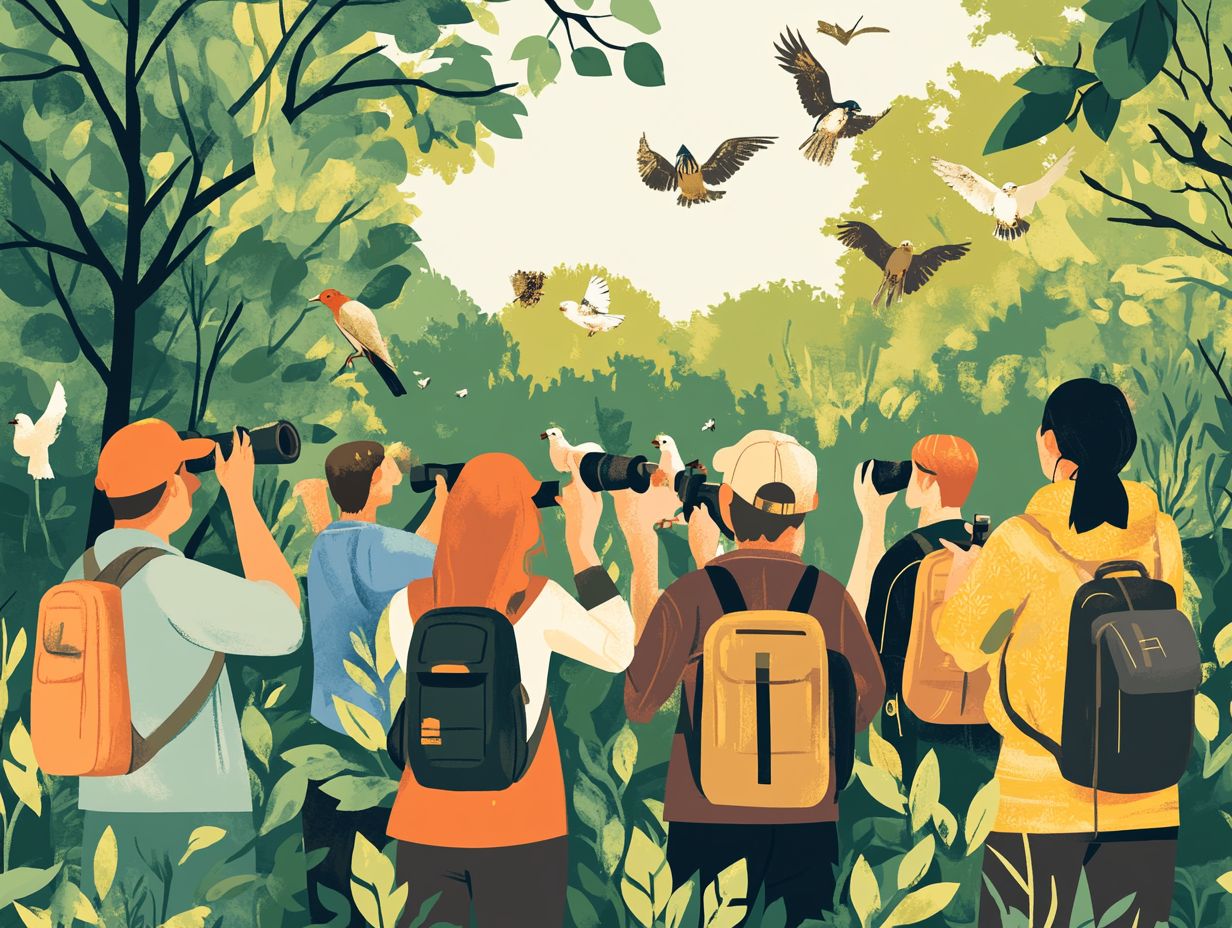
- Get involved in citizen science and help track bird populations.
- Participate in the Christmas Bird Count to contribute valuable insights.
- Contribute to the Breeding Bird Survey to promote conservation efforts.
- Ensure accurate data collection through proper training and protocols.
- Engage in initiatives like Project FeederWatch to make a meaningful impact.
Understanding Citizen Science
Understanding citizen science is vital for recognizing how everyday individuals can contribute to scientific research and data collection across diverse fields, such as the study of birds.
Initiatives like the Great Backyard Bird Count and the eBird project enable you to participate actively. They allow birdwatchers and enthusiasts to gather essential data on bird species, migration patterns, and population dynamics.
This collaborative approach enhances your awareness of conservation efforts. It also positions you to play a crucial role in avian conservation and environmental sustainability.
Defining the Concept
Citizen science is all about the collaborative efforts of everyday individuals often from the community who contribute to scientific research through data collection and analysis.
This innovative approach has its roots in environmental conservation and community engagement. It traces back to early initiatives where enthusiasts dedicated their time to monitoring local flora and fauna.
Its true significance lies in bridging the gap between science and society, enabling you and your neighbors to engage in meaningful research that tackles both local and global challenges.
By bringing together diverse voices, citizen science enhances public awareness of critical scientific issues. Projects can span a range of fields, from ecology to astronomy and climate science.
However, there s a remarkable surge in the study of birds, where birdwatchers collect vital data on species populations and migration patterns. This illustrates the profound impact community involvement can have on our collective understanding of biodiversity.
The Relationship Between Citizen Science and Birding
The relationship between citizen science and birding has evolved into a pivotal partnership that harnesses your enthusiasm as a birdwatcher to provide invaluable data on bird species, migration patterns, and overall populations. Initiatives like the bird count and eBird exemplify this collaboration.
What was once seen as a solitary hobby has morphed into a collective endeavor where your participation is essential to conservation and research efforts. This involvement enables scientists to monitor shifts in avian populations and respond with informed strategies.
Your involvement can change the future of our birds!
How Citizen Science Benefits Birding
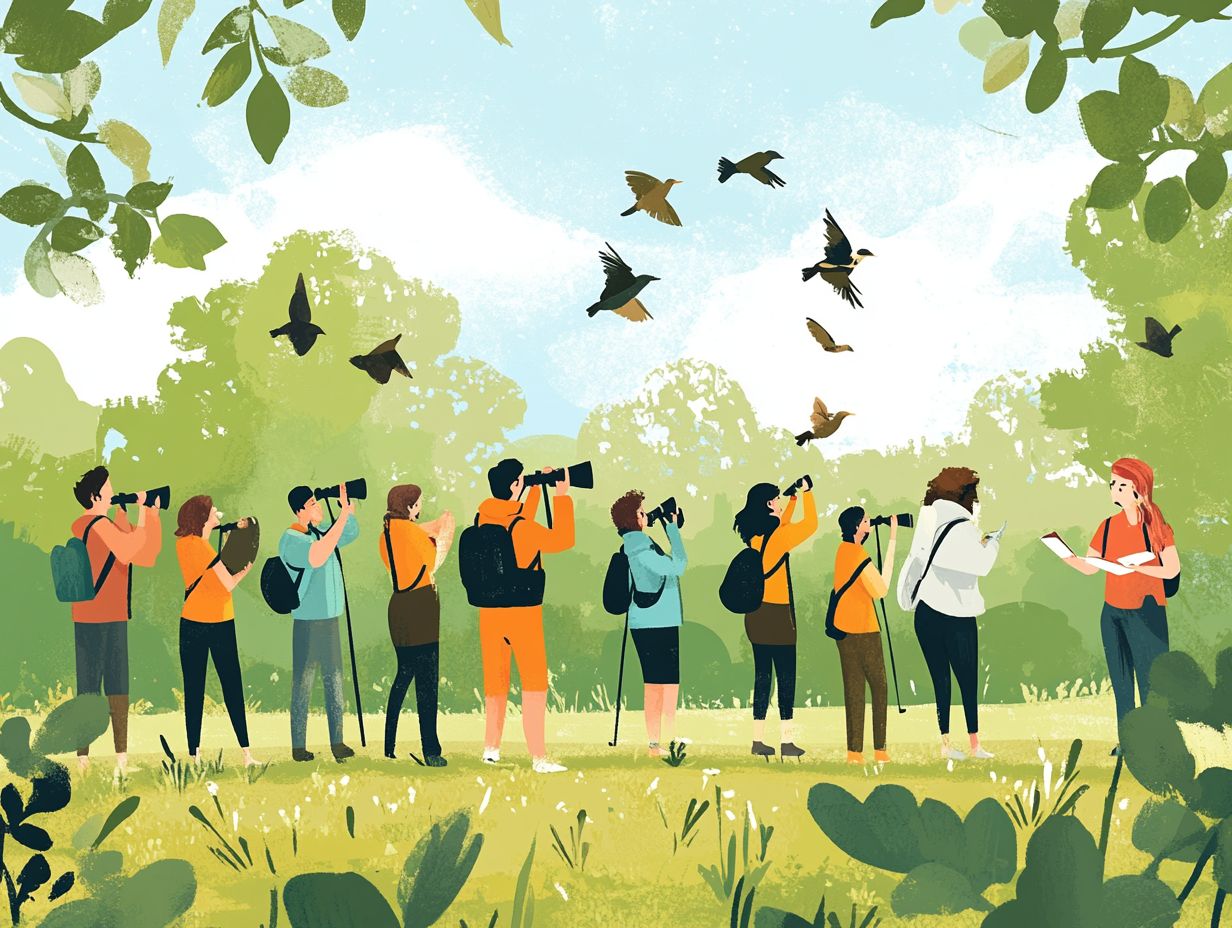
Citizen science significantly enhances your birding experience by inviting you to actively participate in conservation efforts and contribute to vital projects that collect information.
By getting involved, you deepen your appreciation for birds and cultivate a vibrant community with fellow enthusiasts who share your passion.
Engaging in data collection opens educational doors, enabling you to learn more about specific bird species, their behaviors, and the ecological challenges they face.
Your gathered information can shape conservation strategies, helping researchers monitor bird populations and implement effective preservation efforts.
As a result, your birdwatching journey becomes not just rich and rewarding but also instrumental in protecting your feathered friends.
Examples of Citizen Science Projects in Birding
Numerous citizen science projects await your involvement within the birding community. Each provides a unique opportunity to immerse yourself in your passion while making a meaningful contribution to essential research.
Consider participating in the Great Backyard Bird Count, the eBird project, the Christmas Bird Count, or Project FeederWatch.
These initiatives extend beyond mere identification and counting of birds. They require your keen observation skills and commitment to data collection across diverse natural settings.
For example, the Great Backyard Bird Count invites you and your family to document the bird species visiting your backyard, such as the American Kestrel. This experience deepens your connection with local wildlife.
The eBird project encourages you to report your sightings using a mobile app. This enables scientists to track bird migrations and population changes on a global scale.
Meanwhile, the Christmas Bird Count, a cherished tradition, gathers participants like yourself to collectively count birds across various habitats. This creates a valuable historical data set crucial for conservation efforts.
Each of these projects enhances public involvement and demonstrates how your local contributions can drive significant advancements in bird conservation.
How to Participate in Citizen Science for Birding
Engaging in citizen science for birding is accessible and immensely rewarding. Join us! You can contribute to exciting projects like the eBird project and the Great Backyard Bird Count.
This involvement fosters a sense of community and public participation in vital avian research and conservation initiatives. It allows you to make a meaningful impact on the study and protection of bird populations.
Getting Involved and Contributing
Getting involved in citizen science programs like the Great Backyard Bird Count or the eBird project, supported by organizations like Cornell Lab of Ornithology, is straightforward.
Your first step is to create an account on the respective program s website. Once registered, you ll gain access to a wealth of training materials and resources that offer valuable insights into bird identification and data collection techniques.
Your regular observations and consistent data reporting are vital to the success of these initiatives. Accurate information significantly contributes to scientific research and enhances the overall impact of your efforts.
By joining these programs, you ll connect with a vibrant community of like-minded enthusiasts. You will share experiences and deepen your understanding of avian life while fostering a greater appreciation for the environment.
The Impact of Citizen Science on Bird Conservation
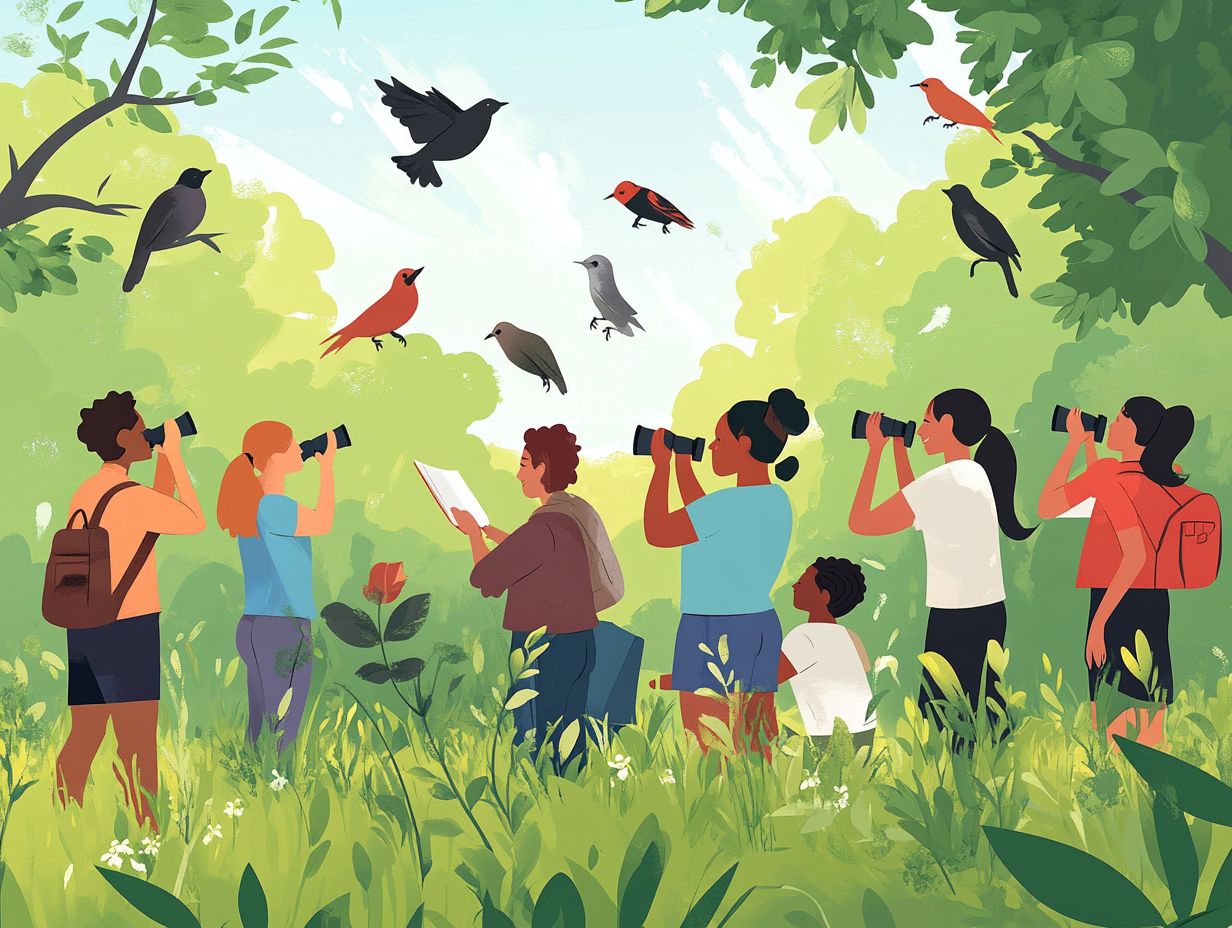
The impact of citizen science on bird conservation is remarkable. It enables you to monitor bird populations across a wide array of habitats, including urban settings.
It also assists researchers in comprehending the effects of climate change on avian species. Your involvement in these efforts enriches your understanding and contributes significantly to the preservation of these beautiful creatures.
How Citizen Science Helps Protect Bird Populations
Citizen science enables you to help protect bird populations by providing essential data that supports monitoring their status and informs conservation efforts to tackle the challenges posed by climate change.
Engaging in activities like backyard bird counts or tracking migratory patterns allows you to contribute to extensive databases that researchers rely on. For instance, the data collected by citizen scientists has been instrumental in preserving critical habitats such as wetlands and forest areas, which are vital nesting grounds for many species.
When you and your community participate in identifying threatened species, your observations can spur urgent actions. These actions range from implementing protective measures to raising public awareness about the pressing issue of biodiversity loss. Your involvement enhances data accuracy and fosters long-term support for conservation strategies, as you and your community become more invested in preserving your natural environments.
Challenges and Limitations of Citizen Science in Birding
While engaging in citizen science within birding offers numerous benefits, it also faces challenges related to data accuracy and participant training.
Issues such as how accurate the data is, the necessity for participant training, and potential biases in reporting can hinder its effectiveness.
Potential Issues and How to Address Them
Concerns in citizen science, including data accuracy and participant engagement, can significantly affect the credibility and effectiveness of your birding projects.
These challenges often arise due to varying levels of expertise among volunteers, which may lead to inconsistent data collection methods. Implementing structured training programs that emphasize identification skills and data entry standards is crucial.
Leveraging technology, such as user-friendly apps for data submission and real-time feedback, can streamline the process and encourage consistent contributions. Fostering a sense of community through workshops and local birding events enhances engagement, making participants feel connected and valuable to the initiative.
This will dramatically boost data quality and project success!
Frequently Asked Questions
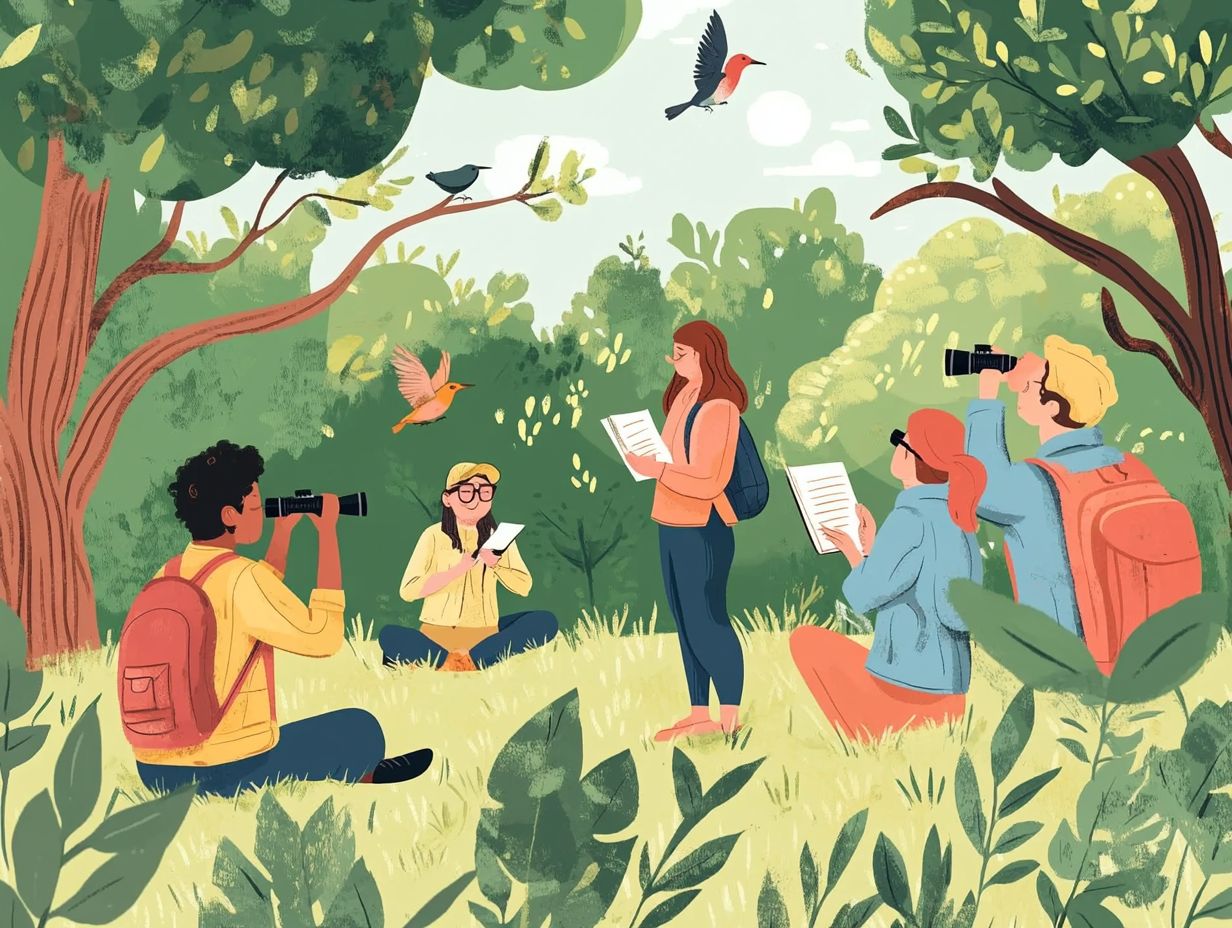
What is the Role of Citizen Science in Birding?
Citizen science plays a crucial role in birding by involving everyday people in collecting data and contributing to scientific research on bird populations and behaviors.
How does Citizen Science benefit the field of Birding?
Citizen science provides a large and diverse pool of data for researchers, allowing for a more comprehensive understanding of bird species and their habitats.
Can anyone participate in Citizen Science for Birding?
Yes, anyone can participate in citizen science for birding, regardless of age, background, or birding experience. It’s a great way for people from all walks of life to get involved in scientific research.
What are some examples of Citizen Science projects for Birding?
Examples of citizen science projects for birding include Christmas Bird Counts, eBird, Project FeederWatch, and the Breeding Bird Survey.
How can I get involved in Citizen Science for Birding?
There are many ways to get involved in citizen science for birding, such as joining a local birding club, participating in bird counts and surveys, and reporting bird sightings to online databases.
Can Citizen Science help with conservation efforts for birds?
Yes, citizen science data can provide important insights into bird populations and their habitats, helping to inform and guide conservation efforts to protect these species and their environments.
Ready to make a difference? Join a citizen science project today or visit [insert relevant website] for more information!

